How to use a portable water flosser?
A comprehensive guide on how to properly and effectively use a water flosser.
What you should know about using a water flosser?
With more people investing in water flossers for dental care, it can be tricky to make sure you’re using yours properly. If that’s the case, this post is a must-read! Dive into its depths and learn how to master the art of proper water flosser – your mouth will thank you later!
How often to use a water flosser?
Are you wondering “How often should I use a water flosser?” Well, the answer is– drumroll—once per day! The general recommendation is to give a thorough floss each night to make sure your teeth and gums stay clean and healthy. Incorporating water flossing into your evening routine can give you peace of mind that your teeth and gums are getting the attention they need and deserve. Once a day should be enough to help maintain excellent dental hygiene, but if it fits into your schedule – twice daily isn’t necessary. So kick back, conveniently operate the small handheld device for about one minute, and enjoy good oral health for many days to come!
Can water flosser replace the toothbrush?
The water flosser is becoming increasingly popular among people who prioritize good oral hygiene, but can it replace the trusty old toothbrush? The answer is no – the point of a water flosser isn’t to be a substitution for brushing your chompers. Rather, it’s an addition meant to enhance one’s personal dental routine… as an alternative to classical flossing. The pleasant pinging accompanied by a stream of targeted water fills in where past methods have been lacking. Your mouth can end up feeling refreshed and revitalized after dropping the mic on the plaques that had made a home around your teeth. So don’t shy away from changing it up if you’re looking for something different. Embrace the flossed revolution!
Water flosser before or after brushing?
It is generally recommended to use a water flosser after brushing, as it can help to remove any remaining food particles or plaque from between your teeth and along the gumline. Using a water flosser before brushing may interfere with the effectiveness of the toothbrush in removing plaque and may also cause toothpaste to be rinsed away before it has a chance to work.
Here is a general recommendation for the order in which to perform oral hygiene tasks:
1.Brush your teeth with a fluoride toothpaste for two minutes.
2.Floss between your teeth to remove any food particles and plaque that your toothbrush may have missed.
3.Rinse your mouth with water or mouthwash to remove any remaining debris.
4.Use a water flosser to clean between your teeth and along the gumline.
5.By following this routine, you can help to ensure that your teeth and gums are thoroughly clean and healthy.
How to use a portable water flosser?
1. Check the battey

Check the battery level of your portable water flosser and ensure it is enough to use. The water pressure is absolutely get lower than normal if the power supply is lacking, you won’t be able to effectively clean away all the plaque and bacteria lingering in those hard-to-reach places.
2. Fill up warm water
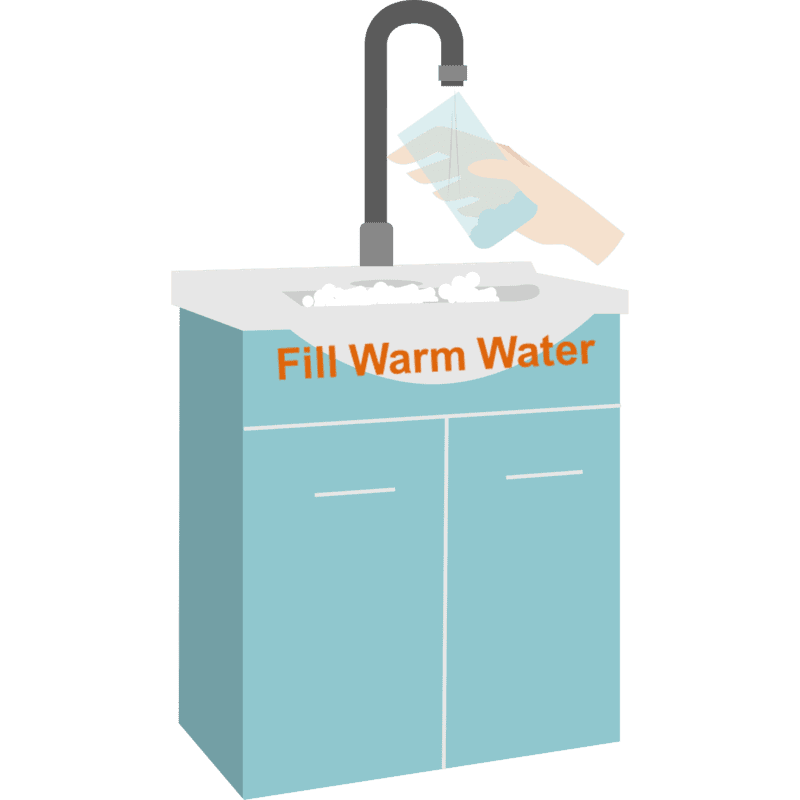
Fill up the tank with warm water instead of cold. Cold water can irritate the gums and cause them to become inflamed or sore. Additionally, cold water can cause teeth sensitivity, as well as an uncomfortable burning sensation in the mouth or throat. It’s better to use lukewarm or room temperature water in order to avoid potential irritations.
3. Choose the proper tip to install
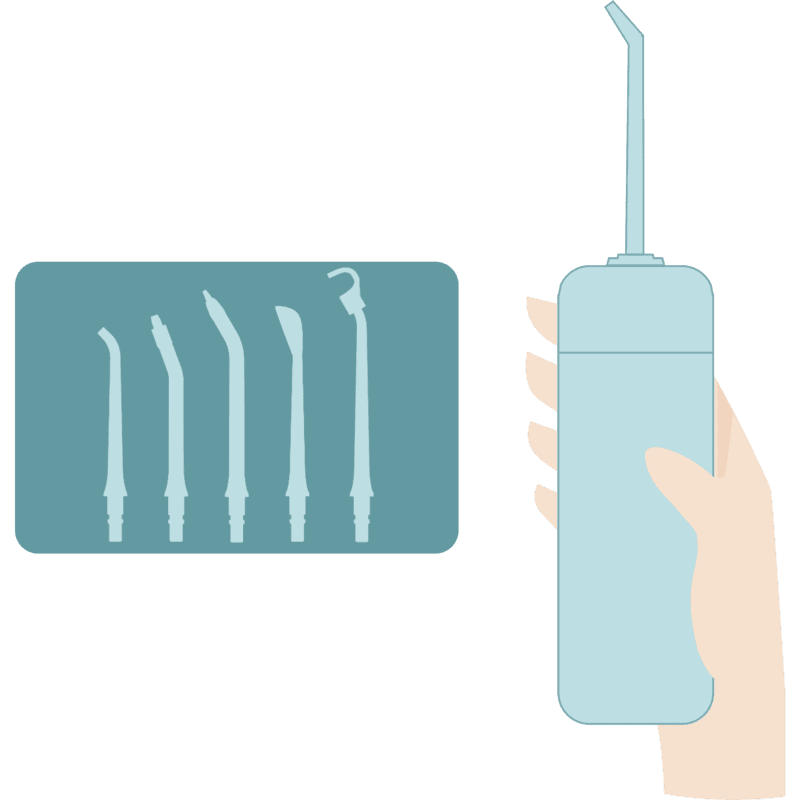
Choose the proper tip to install. There are totally 5 kinds of tips, each with a different role.
4. Adjust to proper pressure mode
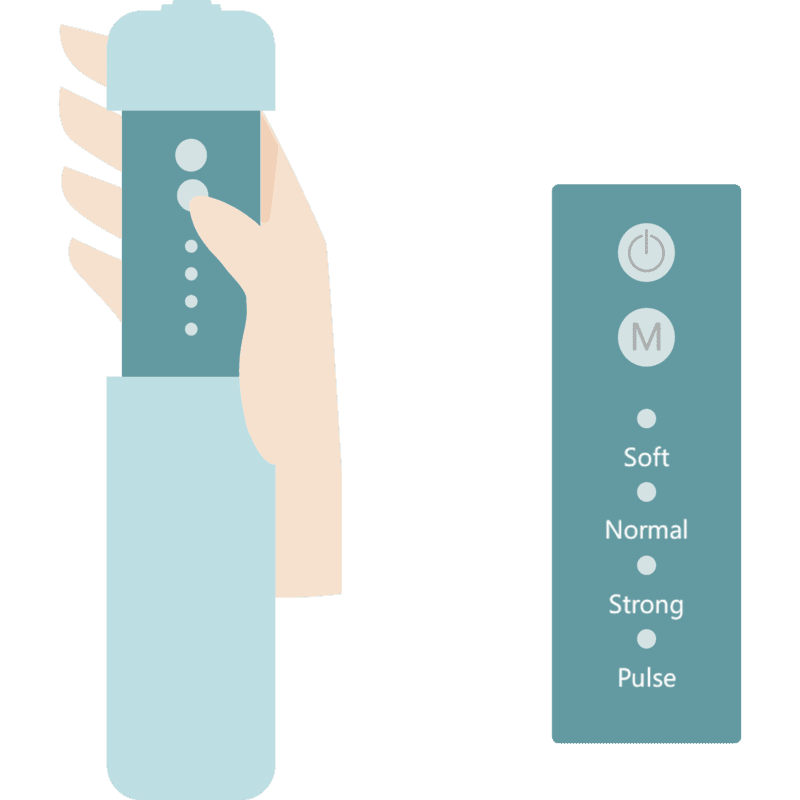
Adjust to proper pressure mode. Getting into the right gear ahead of time will help you feel less flustered when you start up. There are usually 4 of them: Soft, Normal, Strong, Pulse.
5. Bend down at the sink and put tip in your mouth
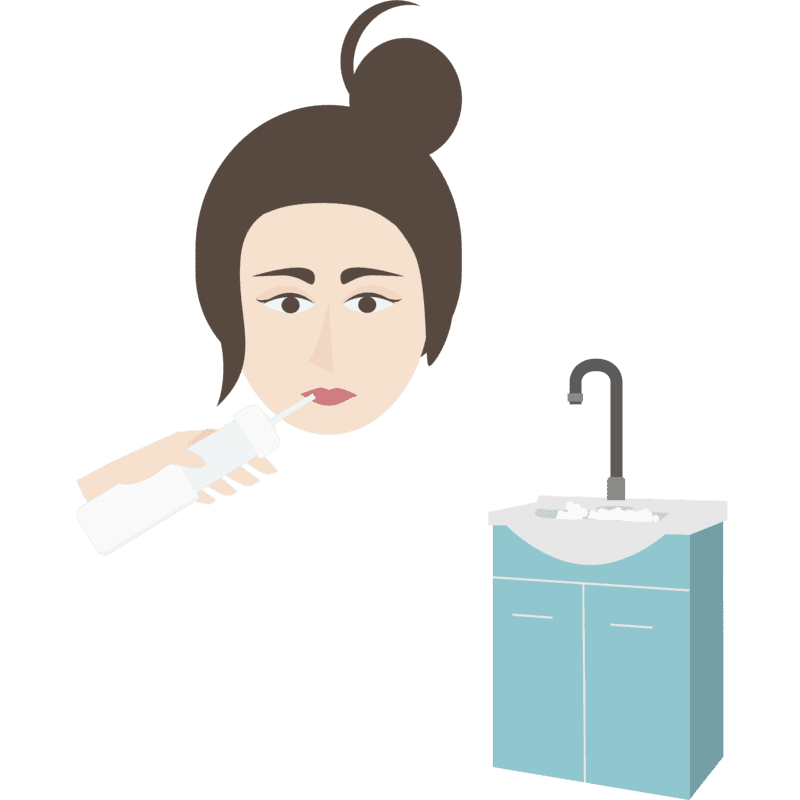
Bend down at the sink and put tip in your mouth. Please be careful to keep your mouth closed during use, otherwise water will splash everywhere.
6. Turn on the device and direct the tip along your gumline
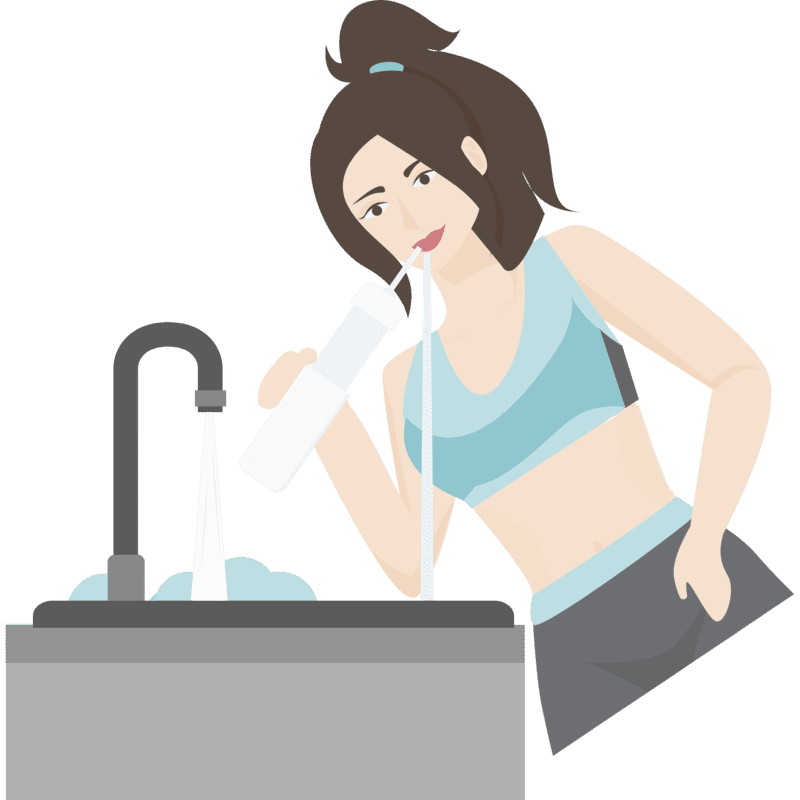
Turn on the device and direct the tip along your gumline, allow water to cascade from your lips into the sink. Turn off the machine and take tip out of your mouth.
7. Keep your machine clean with a direct washing
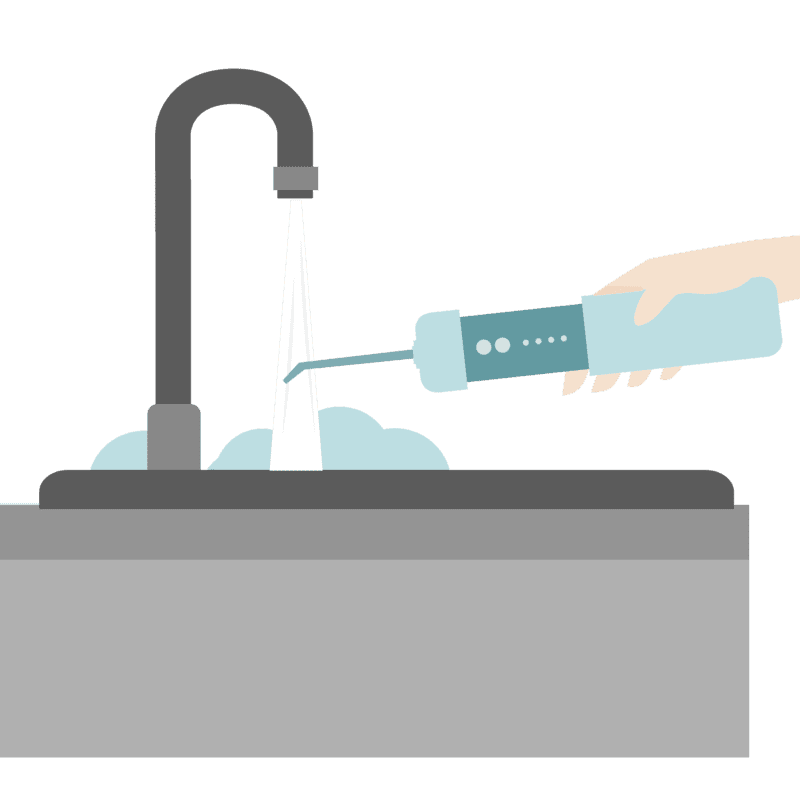
Keep your machine clean with a direct washing! Please rest assured this is ok as all qualified water flossers have passed the IPX7 waterproof grade test. For products with detachable tanks, it’s recommended to separate them for cleaning.
8. Wipe the device dry and then store it

Wipe the device dry, especially the water tank, and then store it. Wiping down the tank is essential for keeping water mold at bay.
Final thoughts
Ultimately, taking care of your oral health is extremely important for living a healthy life and using a water flosser can be an excellent addition to your oral health regime. By using one regularly, it can help keep your teeth clean and sparkling. With all of this information in hand, we hope that you are now able to confidently take charge of your oral health through using a water flosser. If you have any questions or queries regarding the usage and maintenance of the tools discussed here, then feel free to contact us, with our team happy to provide assistance and advice. Together, let’s create lasting smiles!
Boost your business with our high quality services


